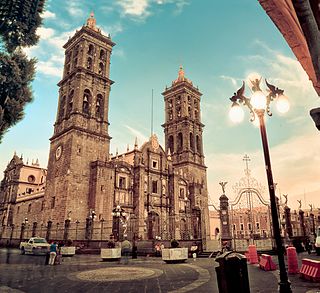
Zacatecas is a city and municipality in Mexico, and the capital and largest city of the state of Zacatecas. Located in north-central Mexico, the city had its start as a Spanish mining camp in the mid-16th century. Native Americans had already known about the area's rich deposits of silver and other minerals. Due to the wealth that the mines provided, Zacatecas quickly became one of the most important cities in New Spain, with much of its silver enriching the Spanish crown. The area saw battles during the turbulent 19th century, but the next major event was the Battle of Zacatecas during the Mexican Revolution when Francisco Villa captured the town, an event still celebrated every anniversary. Today, the colonial part of the city is a World Heritage Site, due to the Baroque and other structures built during its mining days. Mining still remains an important industry. The name Zacatecas is derived from the Zacateco people and has its roots in Nahuatl. The name means "people of the grasslands."
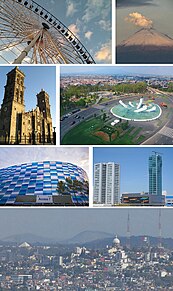
Puebla, formally Heroica Puebla de Zaragoza and also known as Puebla de los Ángeles, is the seat of Puebla Municipality, the capital and largest city of the state of Puebla, and one of the five most important Spanish colonial cities in Mexico. A colonial era-planned city, it is located in (southern) Central Mexico on the main route between the capital, Mexico City, and Mexico's main Atlantic port, Veracruz—about 100km east southeast of Mexico City and about 220 km west of Veracruz.

Morelia is a city and municipality in the north central part of the state of Michoacán in central Mexico. The city is in the Guayangareo Valley and is the capital and largest city of the state. The main pre-Hispanic cultures here were the Purépecha and the Matlatzinca, but no major cities were founded in the valley during this time. The Spanish took control of the area in the 1520s. The Spanish under Viceroy Antonio de Mendoza founded a settlement here in 1541 with the name of Valladolid, which became rival to the nearby city of Pátzcuaro for dominance in Michoacán. In 1580, this rivalry ended in Valladolid's favor and it became the capital of the colonial province. After the Mexican War of Independence, the city was renamed Morelia in honor of José María Morelos, who hailed from the city. In 1991, the city was declared a UNESCO World Heritage Site for its well-preserved colonial buildings and layout of the historic center.
A mausoleum is an external free-standing building constructed as a monument enclosing the interment space or burial chamber of a deceased person or people. A monument without the interment is a cenotaph. A mausoleum may be considered a type of tomb, or the tomb may be considered to be within the mausoleum.

The Metropolitan Cathedral of the Assumption of the Most Blessed Virgin Mary into Heavens is the seat of the Roman Catholic Archdiocese of Mexico. It is situated atop the former Aztec sacred precinct near the Templo Mayor on the northern side of the Plaza de la Constitución in Downtown Mexico City. The cathedral was built in sections from 1573 to 1813 around the original church that was constructed soon after the Spanish conquest of Tenochtitlan, eventually replacing it entirely. Spanish architect Claudio de Arciniega planned the construction, drawing inspiration from Gothic cathedrals in Spain.

Spanish Baroque is a strand of Baroque architecture that evolved in Spain, its provinces, and former colonies.
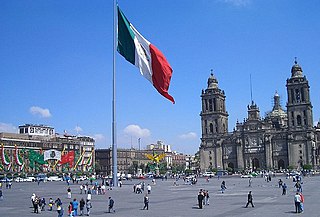
The historic center of Mexico City, also known as the Centro or Centro Histórico, is the central neighborhood in Mexico City, Mexico, focused on Zócalo or main plaza and extending in all directions for a number of blocks, with its farthest extent being west to the Alameda Central. The Zocalo is the largest plaza in Latin America. It can hold up to nearly 100,000 people.

The Cathedral Basilica of the Immaculate Conception also called Durango Cathedral It is a religious building in the Catholic Church that belongs to the Metropolitan Archdiocese of Durango in Mexico. It is located in the historic center of the city of Victoria de Durango, opposite the Plaza de Armas. It is the state's most important architectural representation, and one of the most beautiful buildings in the north of the country. It takes the place of the old parish of the Assumption.

The Immaculate Conception Cathedral also called Córdoba Cathedral is the main Catholic church in the city of Córdoba in the state of Veracruz in Mexico. It was built in the first half of the seventeenth century. It is also headquarters of the Diocese of Córdoba and is dedicated to the Virgin of the Immaculate Conception, also the temple was known as the Immaculate Conception, it is located opposite the Plaza de Armas in the historic center of the city and its bells are made from copper and iron which were brought from Mexico city.

The Immaculate Conception Cathedral Also Apatzingán Cathedral It is a Catholic temple in the city of Apatzingán, Michoacán, Mexico. Is a modernist building and is the headquarters of the Diocese of Apatzingán. It was built in the second half of the 20th century.

The Immaculate Conception Cathedral Also Celaya Cathedral It is the main Catholic building in the city of Celaya in Mexico, occupying at present what was the space of a chapel annexed to the Temple of St. Francis. Because of the size of this last temple, it has come to confuse the Temple of St. Francis with the Cathedral, a common mistake.

The Immaculate Conception Cathedral Also Matehuala Cathedral Is a Catholic cathedral located in the city of Matehuala, in the state of San Luis Potosí in Mexico. Although the cathedral is open for worship, it is still under construction. His style is neo-Gothic / neobizantine.
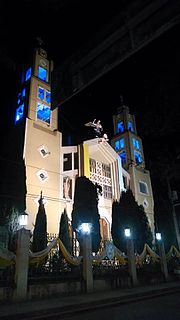
The Co-Cathedral of the Assumption, also known as Chilapa Cathedral, is the main Catholic temple in the city of Chilapa in the state of Guerrero, Mexico, and the second in the diocese of Chilpancingo-Chilapa. It is dedicated to the Virgin of the Assumption.
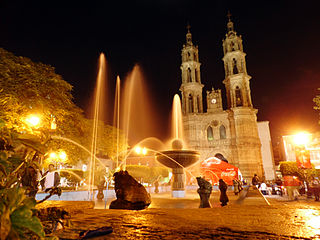
The Immaculate Conception Cathedral, also known as Tepic Cathedral, is the cathedral of the Roman Catholic Diocese of Tepic in Mexico. It is located on the main square, in the center of the city. It is famous for its Neo-Gothic style architecture.

The St. Louis the King Cathedral Also San Luis Potosí Cathedral Is a Catholic cathedral that functions as the seat of the archdiocese of San Luis Potosí in Mexico. It is located in the historic center of the state capital, on the eastern side of the main square. The building we currently know was built in 1670 and was completed in 1730. It is a cathedral from 1854. It is dedicated to St. Louis King of France.

The Immaculate Conception Cathedral Also Tampico Cathedral Is the main Catholic temple in the city of Tampico in Mexico. It is located opposite the Plaza de Armas, in the historical center of the city.

The Our Lady of the Assumption Cathedral Also Teziutlán Cathedral Is a Catholic temple located in the city of Teziutlán, Mexico. Formerly it was a hermitage dedicated to St. Michael the Archangel, later became Chapel of the Rosary. On June 19, 1931, the parish was elevated to a cathedral, on the occasion of the change of episcopal seat passing from the city of Papantla to Teziutlán, leaving as the first bishop of the Diocese of Papantla the Hon. Mr. Nicolás Corona.

The St. John the Baptist Cathedral Also Tulancingo Cathedral It is a Catholic religious building that constitutes a work of the architecture of colonial Mexico built from 1528 by the Franciscan Order. Its combination of imposing and yet simple elements stand out in the historical center of Tulancingo, in the state of Hidalgo, in front of the main square La Floresta.

The Sacred Heart of Jesus Cathedral Also Ciudad Obregón Cathedral Is a Catholic church seat of the Diocese of Ciudad Obregón, in Mexico, is one of the most recent Cathedrals of the country, since it was erected at the end of the 20th century. It is dedicated to the Sacred Heart of Jesus.


